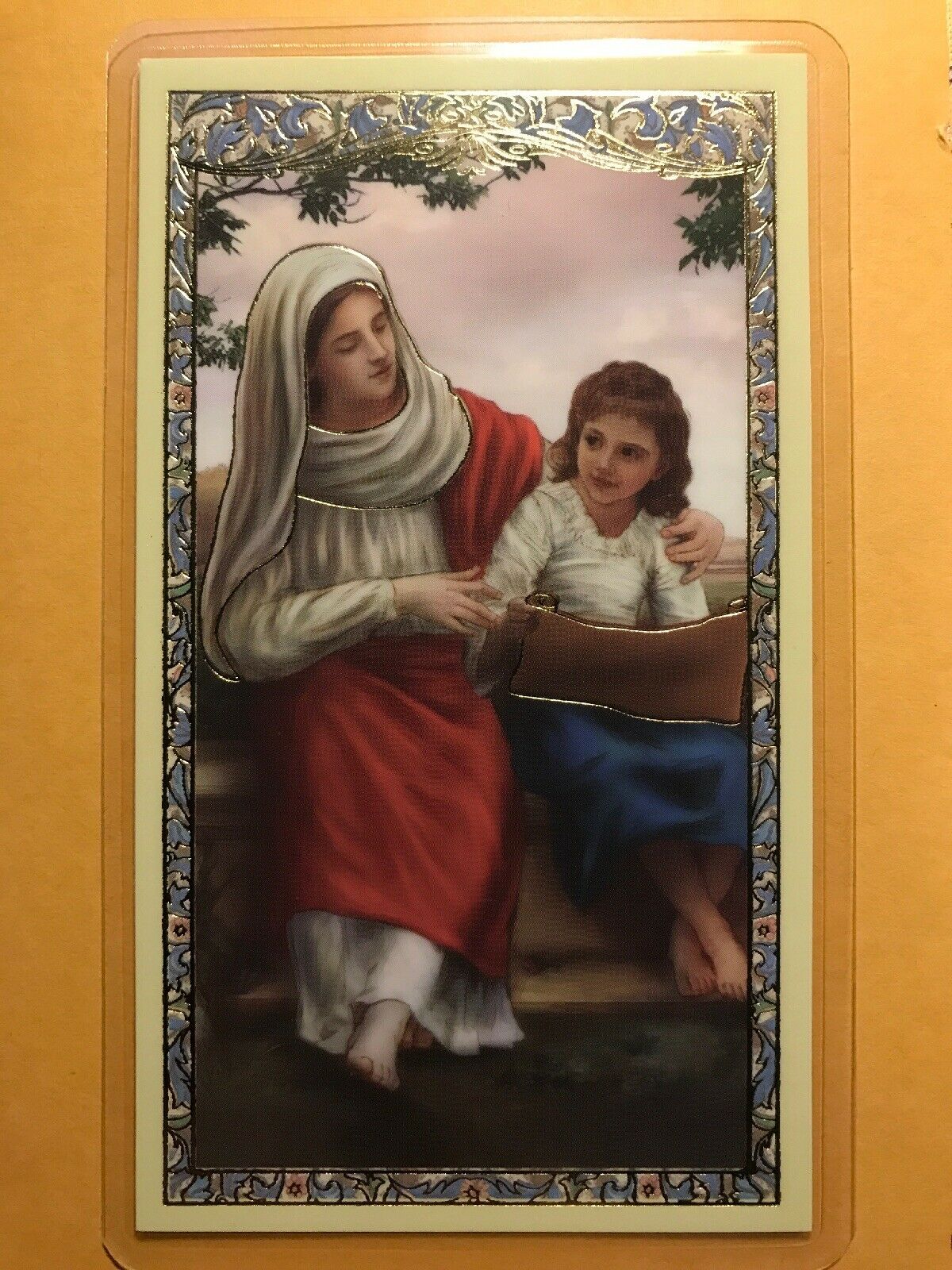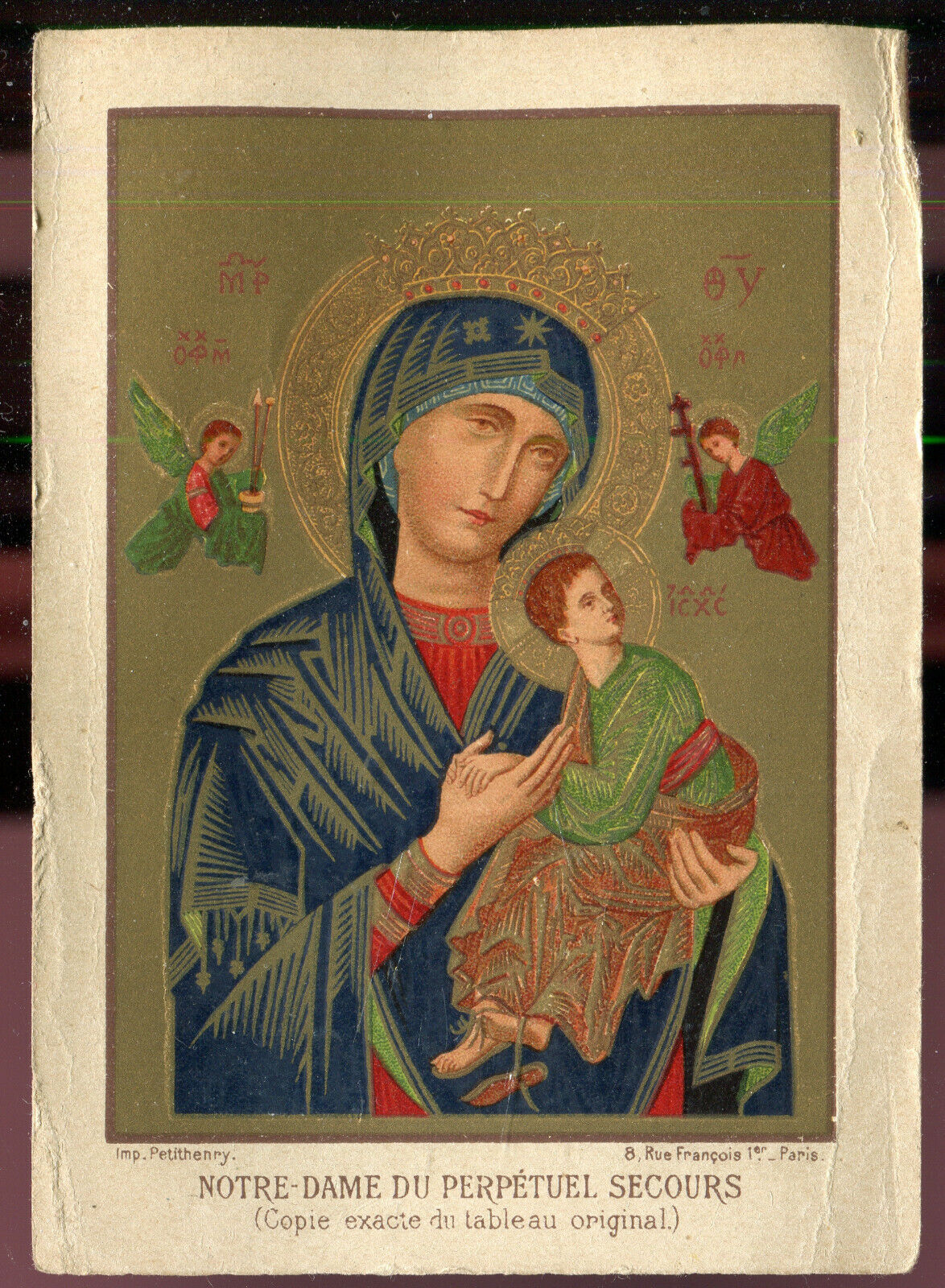-40%
Holy Card of Saint Charbel Makhlouf Plus a 1" Silver Oxidized Medal of Charbel
$ 2.5
- Description
- Size Guide
Description
Laminated Holy Card (4.75" X 3.25") of Saint Charbel Makhlouf Plus a 1" Silver Oxidized Medal of Saint Charbel.This exceptionally detailed die-cast medal, with Saint Charbel on the front and Pray for Us with a flower on the back, is made in the region of Italy that produces the finest quality medals in the world. The silver oxidized finish is has been perfected for hundreds of years by the local Italian craftsmen, and remains unmatched in quality, beauty, and longevity throughout the world -a genuine silver plating with a 3-dimensional depth, and long-lasting brilliance. Medal is approximately 1 inch in height. Attached jump ring is included.
Charbel Makhlouf, O.L.M. (May 8, 1828 – December 24, 1898), also known as Saint Charbel Makhlouf or Sharbel Maklouf, was a Maronite monk and priest from Lebanon. During his life he obtained a wide reputation for holiness and he has been canonized by the Catholic Church.
He is known among Lebanese Christians as the "Miracle Monk of Lebanon." His followers say they call him this because of the miraculous healings they receive in answer to prayers to him, especially those said at his tomb, and for his ability to unite Christians and Muslims. His tomb is located at the Monastery of Saint Maron.
Youssef Antoun Makhlouf was born on May 8, 1828, one of five children born to Antoun Zaarour Makhlouf and Brigitta Chidiac. They lived in the village of Bekaa Kafra, possibly the highest in the Lebanese mountains. His father, a mule driver, died in August 1831, returning from corvée for the Turkish army, leaving his wife a widow to care for their children. Later she remarried a man who went on to seek Holy Orders and became the parish priest of the village.
Makhlouf was raised in a pious home and became drawn to the lives of the saints and to the hermit life, as was practiced by two of his uncles. As a young boy, he was responsible for caring for the family's small flock. He would take the flock to a grotto nearby, where he had installed an icon of the Blessed Virgin Mary. He would spend the day in prayer.
In 1851, Makhlouf left his family and entered the Lebanese Maronite Order at the Monastery of Our Lady in Mayfouq to begin his training as a monk, later transferring to the Monastery of St. Maron in Annaya, located in the Byblos District near Beirut. Here he received the religious habit of a monk and took the name Charbel, after a Christian martyr in Antioch from the 2nd century. He made his final religious profession in the Order on November 1, 1853.
As a young monk Makhlouf began his study of philosophy and theology at the Monastery of Saints Cyprian & Justina in Kfifan, in the Batroun District of Lebanon, to prepare himself for receiving Holy Orders. Among his professors at the seminary was Nimatullah Kassab, who was himself later also declared a saint. He was ordained six years later, on July 23, 1859, in Bkerke. He was sent back to St. Maron Monastery, where he lived a life of severe asceticism in the monastery.
In 1875, Charbel was granted by the abbot of the monastery the privilege of living as a hermit at the Hermitage of Saints Peter and Paul, a chapel under the care of the monastery. He spent the next 23 years living as a solitary hermit, until his death from a stroke on December 24, 1898.
Makhlouf was interred at St. Maron's Monastery on Christmas Day of that year. It was reported that, during the transport of his corpse, the inclement weather conditions hindered the pallbearers in carrying out their duty.
"Father Charbel died on the eve of Christmas; the snow was heavy. We transferred him to the monastery on Christmas day. Before we moved him, the snow was falling rapidly and the clouds were very dark. When we carried him, the clouds disappeared, and the weather cleared." Statement by George Emmanuel Abi-Saseen, one of the pallbearers
One story claims: "A few months after his death, a bright light was seen surrounding his tomb and the superiors opened it to find his body still intact. After that day, a blood-like liquid flowed from his body. Experts and doctors were unable to give medical explanations for the incorruptibility and flexibility." In the years 1950 and 1952, his tomb was opened and his body still had the appearance of a living one. Additionally, the 1950 TV recording shows that at this point Makhlouf's body was still intact, despite the grave becoming severely rusty. The official site mentions: In this century his grave has been opened four times, the last time being in 1955, and each time "it has been noticed that his bleeding body still has its flexibility as if it were alive”.[8] The Catholic Tradition website says: Father Joseph Mahfouz, the postulator of the cause, certified that in 1965 the body of Saint Charbel was still preserved intact with no alteration. In 1976 he again witnessed the opening of the grave; this time the body was completely decomposed. Only the skeleton remained.
On December 5, 1965, Pope Paul VI presided at the beatification of Makhlouf at the conclusion of the Second Vatican Council. The pope said: “A hermit of Mount Lebanon is enrolled in the number of the blessed… a new eminent member of monastic sanctity has by his example and his intercession enriched the entire Christian people … may he make us understand, in a world largely fascinated by wealth and comfort, the paramount value of poverty, penance and asceticism, to liberate the soul in its ascent to God.”
On October 9, 1977, Pope Paul VI presided at the canonization of Makhlouf. At the time Bishop Francis Zayek, head the U.S. Diocese of St. Maron, wrote a pamphlet entitled “A New Star of the East.” Zayek wrote: “St. Sharbel is called the second St. Anthony of the Desert, the Perfume of Lebanon, the first Confessor of the East to be raised to the Altars according to the actual procedure of the Catholic Church, the honor of our Aramaic Antiochian Church, and the model of spiritual values and renewal. Sharbel is like a Cedar of Lebanon standing in eternal prayer, on top of a mountain.” The bishop noted that Makhlouf's canonization plus the beatification causes of others prove “that the Aramaic Maronite Antiochian Church is indeed a living branch of the Catholic Church and is intimately connected with the trunk, who is Christ, our Savior, the beginning and the end of all things.”
As a member of the Lebanese Maronite Order and as a saint of the Maronite Church, Makhlouf is an exemplar of the Maronite expression of Catholic holiness and values. As a saint of the Catholic Church, Makhlouf's example of virtue and intercessory power is available to Catholics of all backgrounds. Faithful to his Maronite spirituality, Makhlouf became a saint for the Catholic Church.
On October 28, 2017, a shrine Charbel Makhlouf was inaugurated at St. Patrick's Cathedral. The Lebanese Maronite Patriarch Bechara Boutros al-Rahi attended the inauguration ceremony giving his blessing and a dedication, as well as Cardinal Timothy M. Dolan. The shrine features a mosaic of Saint Charbel Makhlouf along with national Lebanese emblems such as the Lebanon cedar and a relic of Makhlouf, and was donated by SGBL bank chairman Antoun Sehnaoui in the name of his parents, May and Nabil Sehnaoui.
Among the many miracles related to Makhlouf the church chose two of them to declare the beatification, and a third for his canonization. These miracles are:
the healing of Sister Mary Abel Kamari of the Sacred Hearts
the healing of Iskandar Naim Obeid from Baabdat
the healing of Mariam Awad from Hammana.
A great number of miracles have been attributed to Makhlouf since his death. The most famous one is that of Nohad El Shami, a 55-year-old woman at the time of the miracle who was healed from a partial paralysis. She tells that on the night of January 22, 1993, she saw in her dream two Maronite monks standing next to her bed. One of them put his hands on her neck and operated on her, relieving her from her pain while the other held a pillow behind her back. When she woke she discovered two wounds in her neck, one on each side. She was completely healed and recovered her ability to walk. She believed that it was Saint Charbel who healed her but did not recognize the other monk. Next night, she again saw Saint Charbel in her dream. He said to her: "I did the surgery to let people see and return to faith. I ask you to visit the hermitage on the 22nd of every month, and attend Mass regularly for the rest of your life”. People now gather on the 22nd of each month to pray and celebrate the Mass in the hermitage of Saint Charbel in Annaya.












